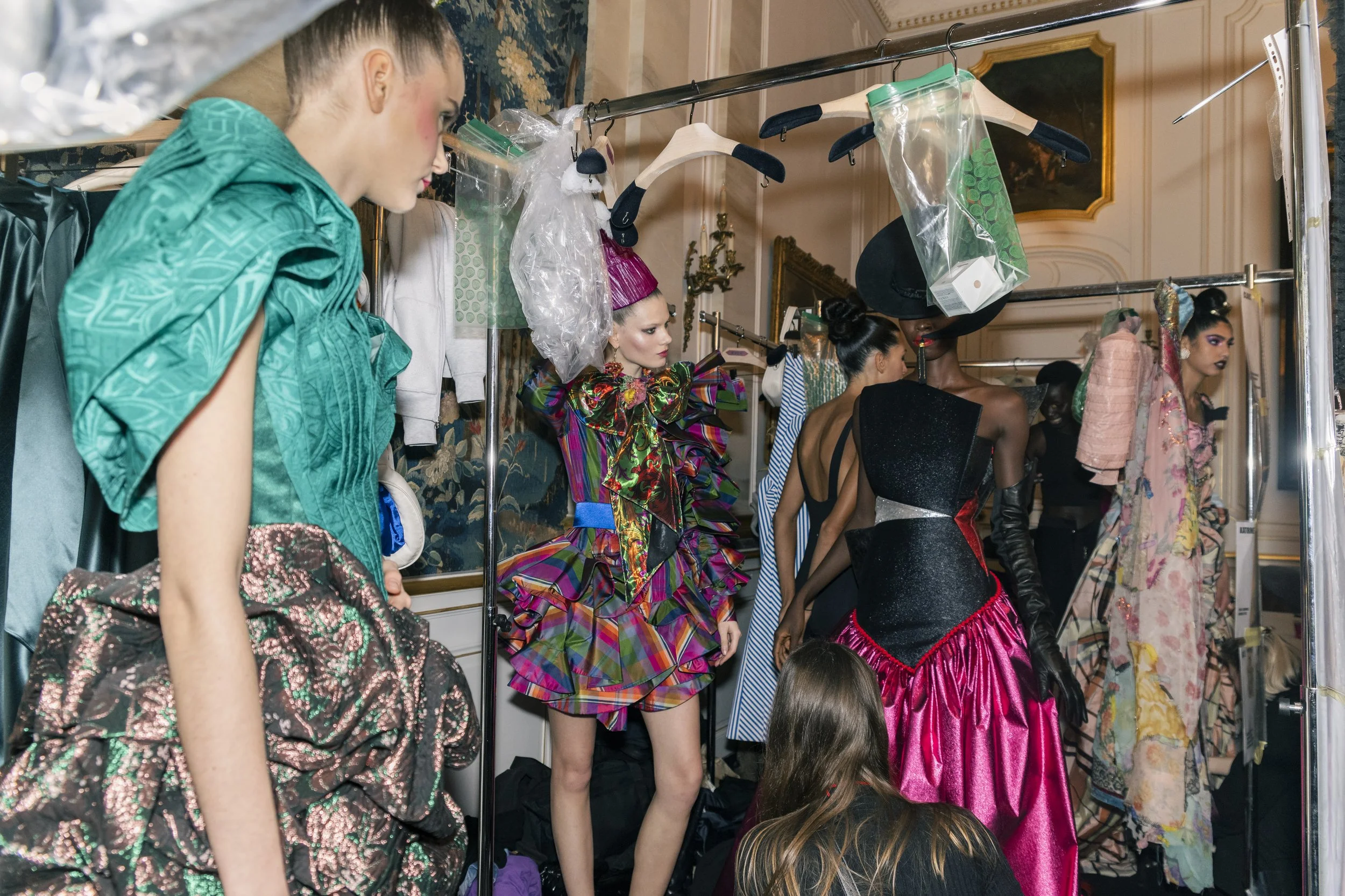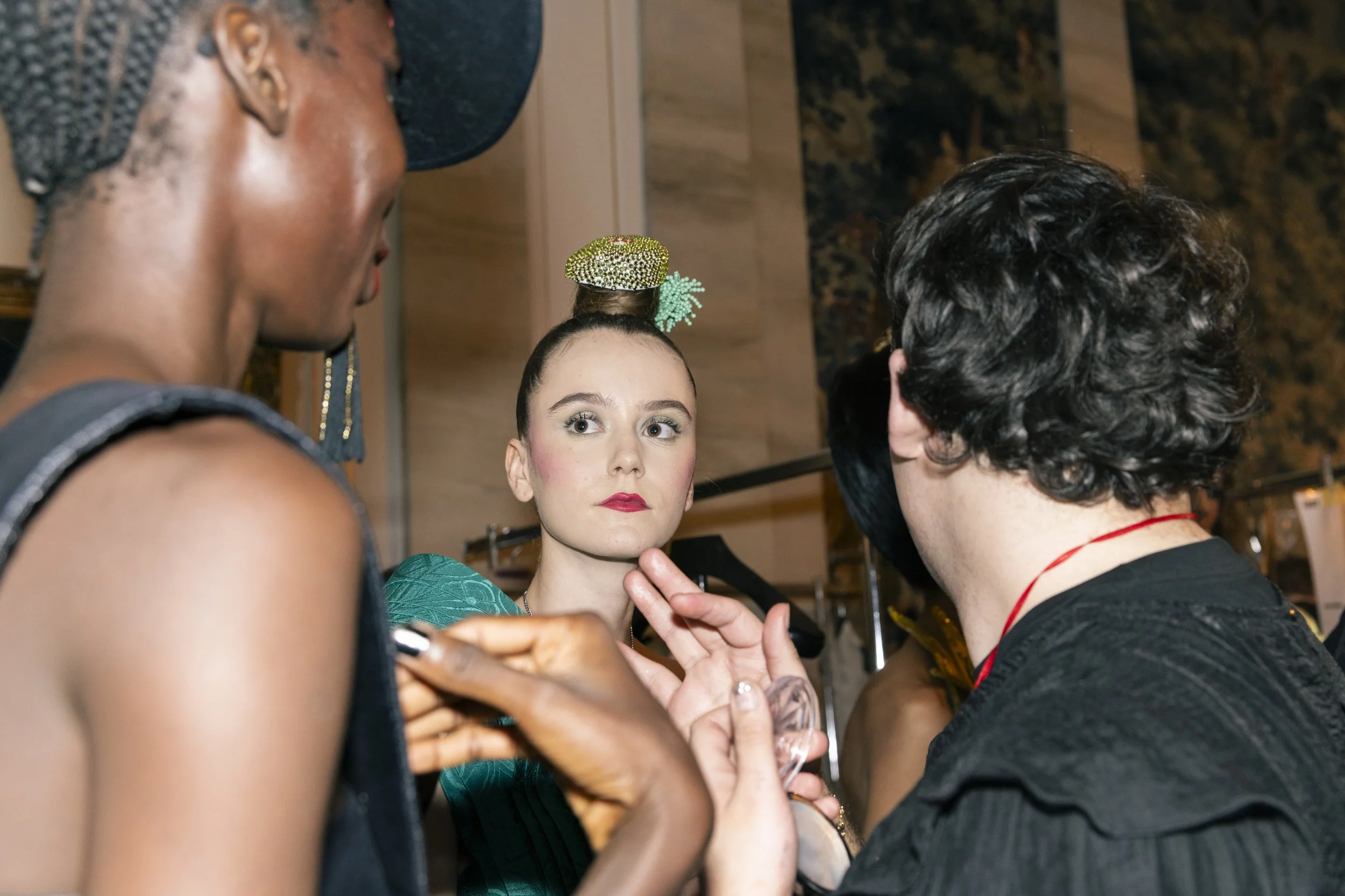IN CONVERSATION WITH RONALD VAN DER KEMP
words by MARIE-PAULINE CESARI
interview by TIMOTEJ LETONJA
photography by ELSA GOUDENÈGE
For over a decade, Ronald van der Kemp has been redefining the codes of couture with his signature approach to sustainability, artistry, and upcycling. With WARDROBE 21, presented in Paris on January 28th, he once again proves that fashion can be a powerful act of transformation. His latest wardrobe, Let the Sun Shine In, celebrates the beauty of imperfection and the richness of reimagined materials—from vintage couture fabrics to handwoven Thai silks and even repurposed plastic bottles.
Discover exclusive backstage photos from the show, captured by Elsa Goudenège, and an interview with Ronald van der Kemp by Timotej Letonja, conducted right after the show.
Tell me to begin with about the fabrics.
I was inspired by Thailand, vintage materials, and research. I was given some beautiful archival fabrics from Thailand, really royal fabrics, and that became the starting point. From there, we worked with what we had, transforming materials that might not seem beautiful at first into something extraordinary.
We even repurposed plastic bottles, turning them into jewelry. You would never recognize their original form. I always see this process as a kind of Dada movement—taking unexpected materials and giving them new life. For instance, we even used lettuce from a closed-down grocery store to create elements for one of our sweaters.
And then there are the exotic skins—normally a no-go in fashion today. But these were display pieces, untouched for 15 years, and we gave them a second life. That kind of reinvention is very important to me.
That’s amazing. I was going to ask about the jewelry—what’s the story there?
It’s a mix. Some pieces were given to me, like Thai jewelry, and others we found or collected over time. I love finding things on the street or in unexpected places and incorporating them into the collection. It’s all about combining and reimagining.
You’ve been showing in Paris for years now. What do you love most about being here?
Paris feels like home to me. There’s a deep culture of fashion and history here, and that resonates with what I do. Last season, I showed in New York, which had an incredible energy, and I felt it was important to make a statement, especially leading up to the elections. But this season, I wanted to return to Paris. This is where my work belongs.
One last thing—why do you call this a wardrobe rather than a collection?
Since the beginning, I’ve referred to my work as wardrobes because they are timeless. I even upcycle pieces from previous wardrobes into new ones. Sustainability is a key element, but I don’t want to preach or point fingers. I’d rather set a positive example and hope to inspire people in a deeper way. That’s what fashion and art should do—move people beyond words.



























